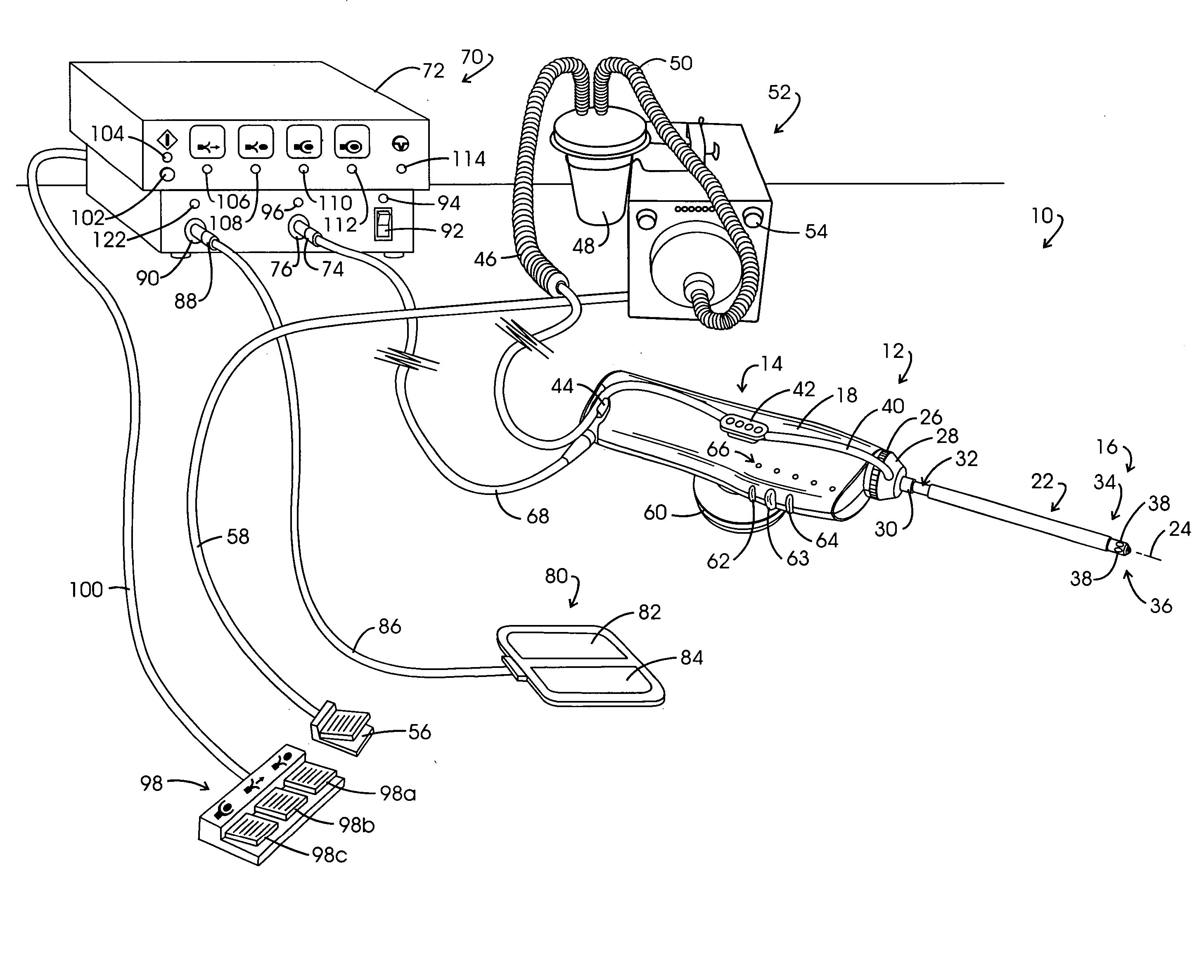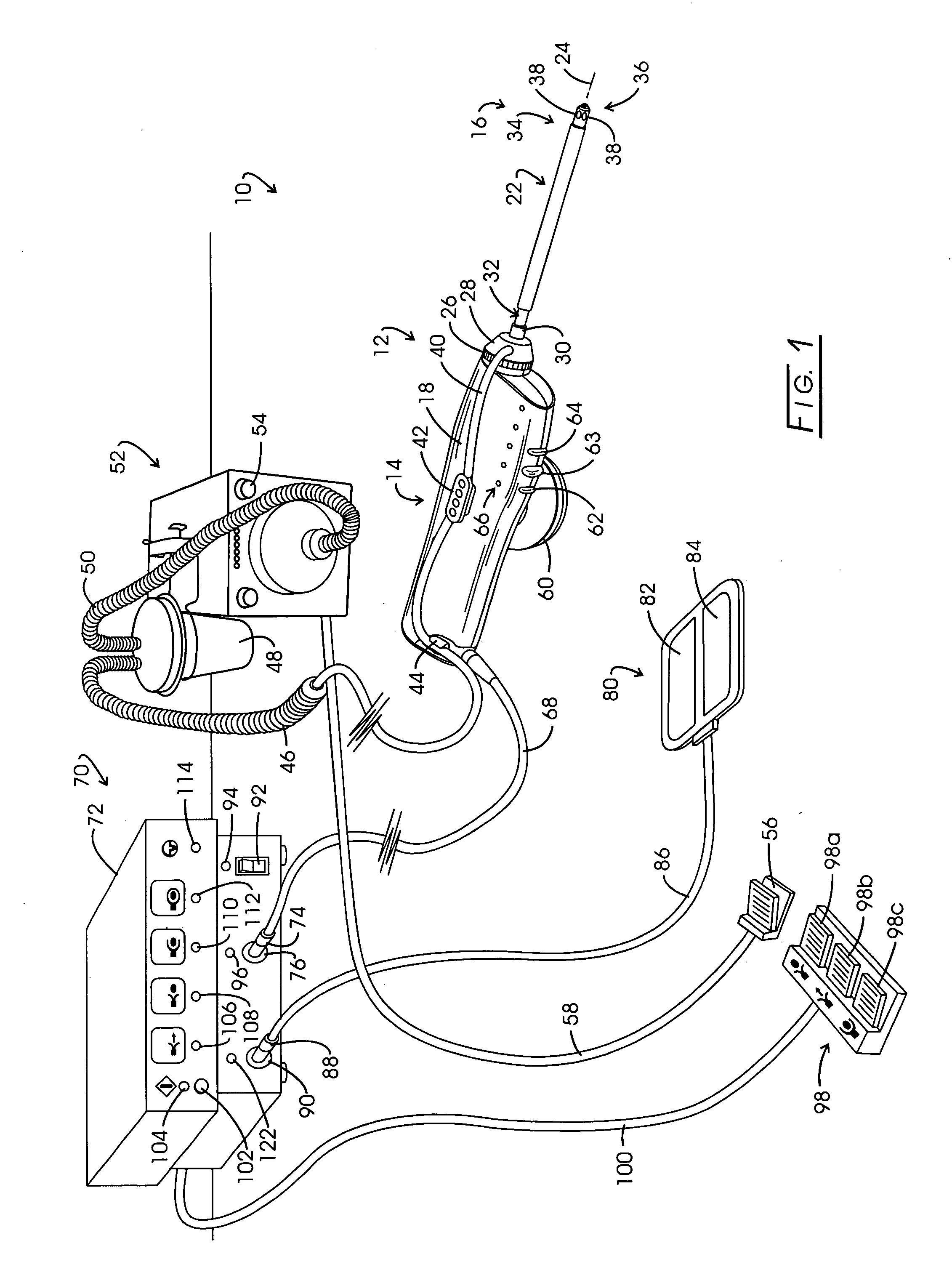Minimally invasive instrumentation for recovering tissue
a tissue and minimally invasive technology, applied in the field can solve the problems of insufficient specimen material for diagnosis, inability to allow a more advanced pathological investigation, and a risk of false positive, so as to improve the performance of tissue retrieval capture component cable assemblies, improve the tensional strength, and improve the effect of strength
- Summary
- Abstract
- Description
- Claims
- Application Information
AI Technical Summary
Benefits of technology
Problems solved by technology
Method used
Image
Examples
Embodiment Construction
In the discourse to follow, computational data as well as test data taken with breast phantom materials are set forth. These data materials were developed in conjunction with investigations carried out with the noted tissue retrieval system marketed under the trade designation EN-BLOC®. Accordingly, that system is initially described.
Referring to FIG. 1, the noted system for isolating and retrieving a target tissue volume or biopsy sample is illustrated in general at 10. System 10 comprises a tissue retrieval instrument represented generally at 12 which includes a reusable component represented generally at 14, sometimes referred to as a “handle”. Instrument 12 additionally includes a disposable component represented generally at 16, the rearward portion of which is removably mounted within the polymeric housing 18 of reusable component 14. The disposable component 16 is sometimes referred to as a “probe”.
Disposable component 16 includes an elongate cannula assembly or support ...
PUM
 Login to View More
Login to View More Abstract
Description
Claims
Application Information
 Login to View More
Login to View More - R&D
- Intellectual Property
- Life Sciences
- Materials
- Tech Scout
- Unparalleled Data Quality
- Higher Quality Content
- 60% Fewer Hallucinations
Browse by: Latest US Patents, China's latest patents, Technical Efficacy Thesaurus, Application Domain, Technology Topic, Popular Technical Reports.
© 2025 PatSnap. All rights reserved.Legal|Privacy policy|Modern Slavery Act Transparency Statement|Sitemap|About US| Contact US: help@patsnap.com



